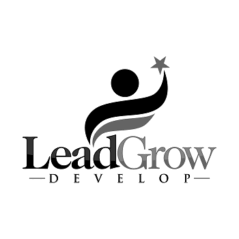In today’s competitive landscape, enhancing office efficiency and productivity is crucial for maintaining a thriving business. Whether you’re part of a large corporation or a small enterprise, streamlined processes and a motivated workforce contribute significantly to your bottom line. In this article, we explore five practical strategies to boost your office’s output while cultivating an environment that supports continuous improvement.
1. Optimize Your Office Layout and Infrastructure
A well-designed workplace has a profound impact on efficiency. Start by evaluating your office layout to ensure that it encourages collaboration and minimizes distractions. An open floor plan with designated quiet zones can help balance teamwork with the need for focused work. Consider incorporating adjustable workstations, ergonomic furniture, and modern lighting systems to create a comfortable and inspiring environment.
Organizing your physical space isn’t just about aesthetics—it plays a role in reducing wasted time. When employees know where essential tools and supplies are located, they can maintain a steady workflow without unnecessary interruptions. Regularly assess your office’s spatial configuration and make improvements that reflect the evolving needs of your team.
2. Leverage Technology to Automate Routine Tasks
Technology is a powerful ally when it comes to streamlining operations. Automating repetitive tasks such as data entry, appointment scheduling, and report generation can free up valuable time for employees to focus on more strategic projects. Invest in software tools and platforms that integrate with your existing systems to create a seamless workflow. Cloud-based solutions, for example, can facilitate better collaboration among remote and on-site staff by allowing them to access shared documents and updates in real time.
Embracing digital transformation not only reduces manual errors but also enhances decision-making by providing comprehensive data insights. By turning routine tasks over to technology, your team can focus on driving innovation and responding quickly to market changes, ultimately fostering a more agile work environment.
3. Streamline Administrative and Financial Processes
Financial management plays a critical role in any business, and modern accounting systems can significantly ease administrative burdens. Many organizations rely on expert financial professionals to keep their books in order and manage complex data. According to the U.S. Bureau of Labor Statistics, approximately 1.4 million accountants and auditors are working in the United States, underscoring the scale and importance of efficient financial processes in the corporate ecosystem. By leveraging automated accounting software and digital invoicing systems, businesses can reduce errors, improve accuracy, and ensure timely decision-making.
Integrating these systems into your workflow not only simplifies the tracking of expenditures and revenues but also contributes to more effective budgeting and forecasting. Streamlining these processes allows management to allocate resources better, thus paving the way for sustained growth and higher productivity.
4. Prioritize Cleanliness and Maintenance
A clean and orderly workspace is fundamental to productivity. A cluttered environment can lead to distractions and increased stress, directly affecting employee performance. Regular cleaning and proper maintenance of office facilities ensure that your team works in a healthy and inviting space. Professional cleaning services can help maintain high standards of hygiene and organization throughout the office. This is particularly significant considering that, in the past year, over 3.24 million individuals were employed in the cleaning services industry across the United States, highlighting the value of a well-maintained workspace.
Regular sanitation, dusting of workstations, and organized common areas contribute not only to physical health but also to creating a pleasant atmosphere that fosters concentration and efficiency. By investing in consistent cleaning practices, you demonstrate a commitment to employee well-being, which in turn elevates overall productivity.
5. Foster a Culture of Continuous Learning and Adaptation
Investing in employee development is key to maintaining high productivity levels. Encourage ongoing training and skills development programs that not only benefit individual growth but also lead to organizational improvements. From leadership workshops to specialized technical training, empowering your workforce with new competencies can drive innovation and enhance operational efficiency.
Moreover, instilling a mindset of continuous improvement within your organization can lead to smarter, more agile business practices. When employees are encouraged to offer suggestions and experiment with new approaches, the entire team benefits. This culture of open communication and learning is essential for navigating the rapidly changing business landscape.
The Bigger Picture: Business Growth and Market Dynamics
Efficiency efforts in your office can have far-reaching implications beyond daily operations. Small businesses, for instance, rely heavily on every bit of operational effectiveness to stay competitive in the market. According to the U.S. Small Business Association Office of Advocacy, there are over 33 million small businesses in the United States. This impressive figure underscores the significance of streamlining processes and adopting best practices to stand out in a crowded business landscape.
